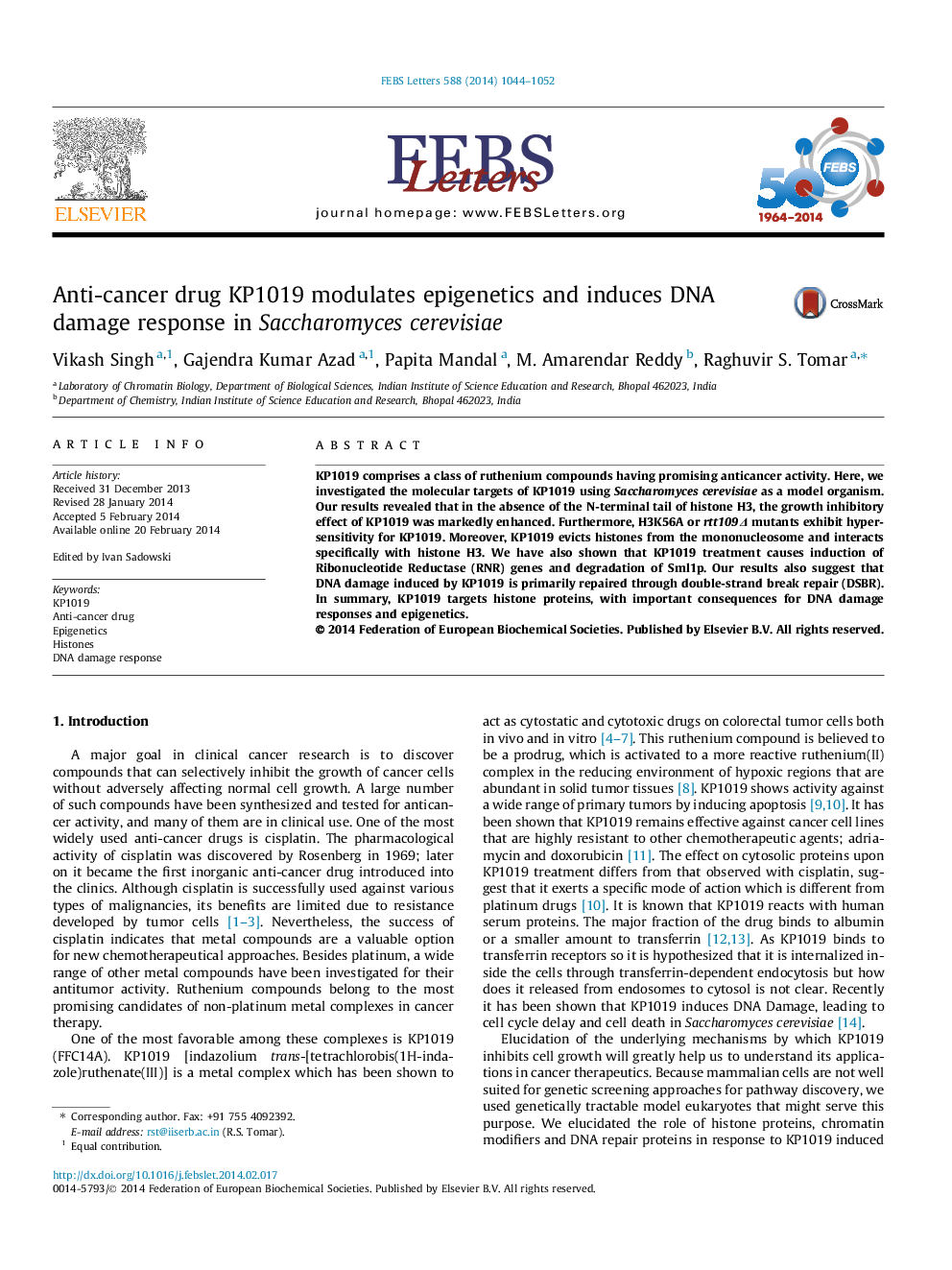| Article ID | Journal | Published Year | Pages | File Type |
|---|---|---|---|---|
| 10870514 | FEBS Letters | 2014 | 9 Pages |
Abstract
KP1019 comprises a class of ruthenium compounds having promising anticancer activity. Here, we investigated the molecular targets of KP1019 using Saccharomyces cerevisiae as a model organism. Our results revealed that in the absence of the N-terminal tail of histone H3, the growth inhibitory effect of KP1019 was markedly enhanced. Furthermore, H3K56A or rtt109Î mutants exhibit hypersensitivity for KP1019. Moreover, KP1019 evicts histones from the mononucleosome and interacts specifically with histone H3. We have also shown that KP1019 treatment causes induction of Ribonucleotide Reductase (RNR) genes and degradation of Sml1p. Our results also suggest that DNA damage induced by KP1019 is primarily repaired through double-strand break repair (DSBR). In summary, KP1019 targets histone proteins, with important consequences for DNA damage responses and epigenetics.
Related Topics
Life Sciences
Agricultural and Biological Sciences
Plant Science
Authors
Vikash Singh, Gajendra Kumar Azad, Papita Mandal, M. Amarendar Reddy, Raghuvir S. Tomar,
